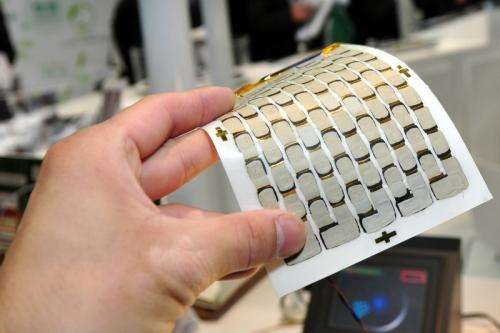February 7, 2013 weblog
Fujifilm breaks record with thermoelectric material

(Phys.org)—Photographic film maker Fujifilm has been busy this year at the Nanotech 2013 conference being held in Tokyo. First came news of bendable/roll up speakers. Now the company is showing off a new thermoelectric material it's developed that is so sensitive it can covert a difference in temperature of just 1°C to several kilowatts of electricity.
At the conference, Fujifilm showed a person pressing their hand against a device that caused a toy car to begin circling around a track. It's based on a thermoelectric material, representatives from the company told attendees that has the highest conversation efficiency of any other such material.
Thermoelectric materials work by taking advantage of the temperature differences that exist on either side of a given substance. At the demonstration, the temperature difference is found between the heat from a human hand and the surrounding environment. In such materials, an electric charge can be created if a way is found to take advantage of the temperature gradient that exists in the material, i.e. causing charge carriers in it to diffuse from the warm side to the cooler side. The electricity produced from a thermoelectric material can be used to power a small device, or sent to a battery for storage.
In addition to breaking the record for efficiency conversion, the new material is also an organic conductive polymer —and it can also be manufactured using a printing process. That means it can be produced in virtually any size needed. And because it is also bendable, it can be used as part of a wrapping apparatus, making it suitable for skin applications, such as a power generator for medical devices. Representatives for Fujifilm said it could also be used with solar cells to help make them more efficient, though they declined to give any other details regarding how the material was made. They added that another announcement will be forthcoming at the 60th JSAP Spring Meeting in March.
What's perhaps most exciting about the new material, is that it might be leading the way towards wearable materials that take advantage of our body heat, to power our personal devices—relieving us finally from the burden of having to constantly worry about making sure to recharge them.
More information: via Tech-on
© 2013 Phys.org



















